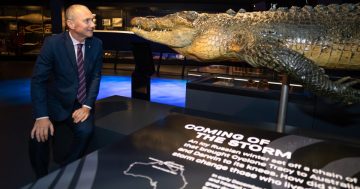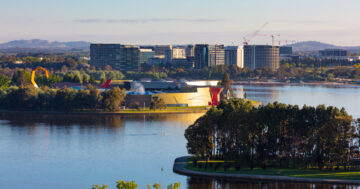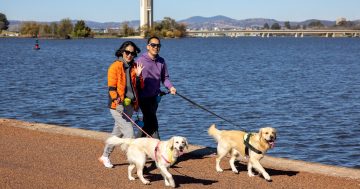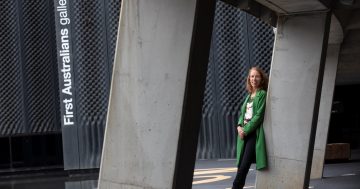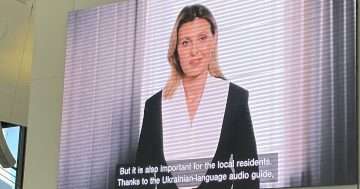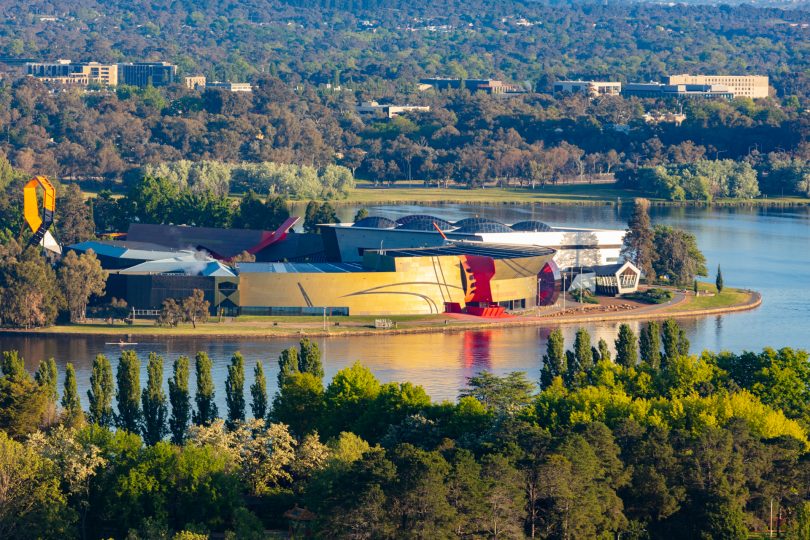
“If you want to get from the National Museum to the other institutions, then you can forget about walking,” Greater Canberra told the inquiry on Monday. Photo: Thomas Lucraft.
A bridge across the narrower part of Lake Burley Griffin connecting the National Museum with the Parliamentary Zone would be “wonderful for Canberra”, National Museum director Mathew Trinca told the Joint Standing Committee into the National Capital and External Territories on Tuesday (22 August).
“I do think ultimately a bridge across that narrower part of the lake would be wonderful for Canberra; I’d love to see it happen,” Dr Trinca said, although he acknowledged concerns about how a bridge would be executed.
However, he said it is a “greater concern” to see the Acton waterfront boardwalk eventually extended around West Basin and to the museum.
Dr Trinca said one of the museum’s key virtues is its location close to the ANU and proximity to the city.
“But this is not yet well exploited because walking traffic that would otherwise be encouraged to walk around the lake from the city really comes up against some less-than-friendly opportunities to continue your journey,” he said.
“Eventually, it seems to me, that boardwalk should sweep around the West Basin and at the museum.
“You should be able to walk down from the city and be encouraged to walk out to the museum.”
While there are currently asbestos concerns on the peninsula, the museum’s submission said it “stands ready” to work with the NCA to build seamless pedestrian access from the waterfront boardwalk to the museum.
Dr Trinca said a bridge is a “proposal with a long history”, and “the question really is how to better connect the museum to the Parliamentary Triangle”.
This question has also been discussed in other evidence presented to the inquiry, and connectivity between the national institutions was a concern raised by community group Greater Canberra.
Committee member Aymon Wuolanne said a bridge from the National Museum to the other institutions would turn a walk that is roughly 3.7 or 3.8 kilometres into a 700-metre walk from the museum to the National Library.
“If you want to get from the National Museum to the other institutions, then you can forget about walking,” Mr Wuolanne told the inquiry on Monday.
Dr Trinca said the lack of accessibility to the museum is an obstacle to growing its visitor numbers and the museum’s submission noted that parking is a particular issue.
“The current car parking arrangements on the Acton peninsula are difficult for both staff and visitors to navigate and act as a barrier to the Museum growing its visitor base, as does the state of disrepair of the surrounding roads,” the submission said.
“The Museum believes further investment is required to ensure that the public amenity of the Museum’s location is fully realised and that access to the site is seamless and engaging for all visitors, irrespective of how they arrive.”
The National Museum previously operated a free hop-on, hop-off bus service between the major cultural institutions, and Dr Trinca said this is an opportunity that would help people move between Canberra’s cultural sites.
In earlier questions, Dr Trinca spoke of the need for greater collaboration between cultural institutions in the capital and the benefits of shared marketing initiatives.
“A dedicated free bus clipper service would encourage that mutual support,” he said.
Submissions to the committee can be viewed here.












